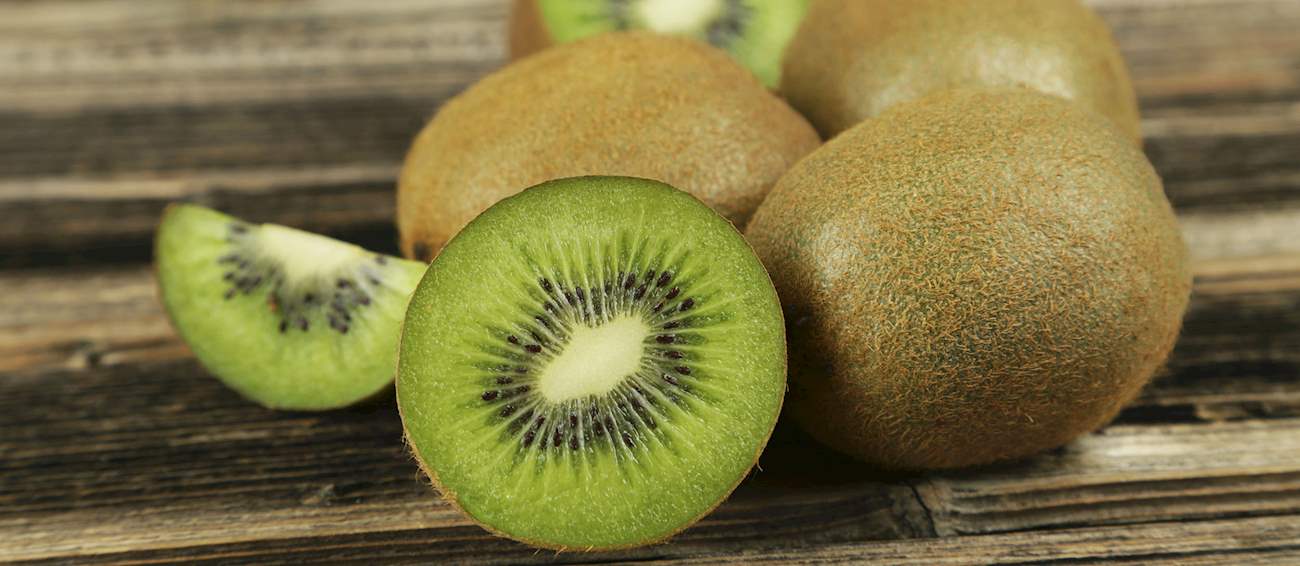Best Kiwi Fruit Types in the World
The delicious Pierias kiwi was first grown in 1973 on the Pierian plains, and it showed an amazing adaptability to the microclimate of this region nestled between Mt. Pierus and Mt. Olympus. The soil composition and cultivation techniques are the two most important factors contributing to the high quality of this fruit and its ability to keep for up to nine months after harvesting.
This kiwi, recognized for its distinct characteristics and its delicate exotic aroma is called 'the Fruit of Olympus'. The kiwi grown on the Pieria plains is the Hayward varietal. It has a reddish green skin and particularly juicy, pale green flesh.
Kiwi de l'Adour is a kiwi fruit with unique organoleptic qualities grown in the Pyrénées-Atlantiques region in France. When it's ripe, its texture is juicy with melt-in-the-mouth properties and the flesh is bright green, intensely fragrant and slightly acidic in taste.
On the exterior, its skin is typically brown to green and covered with delicate silky hairs over the whole surface. Its great taste and texture are due to the region's climate - in the late autumn, there is frost that allows the kiwis to be harvested with a higher sugar content than usual.
First introduced to the Agro Pontino area in the 1970s, Kiwi Latina is a fresh fruit of the Actinidia deliciosa species, derived from the Hayward cultivar and produced in the provinces of Latina and Rome. Once known as Chinese gooseberry, the kiwi fruit was brought to Italy from New Zealand by missionaries who started growing it as a decorative plant.
Today, Kiwi Latina is known to be packed with antioxidants and especially prized for its high vitamin C content. When fully ripened, it has a characteristic acidic sweet flavor and a delightful fruity aroma. Kiwi Latina is most often enjoyed fresh but it also makes an ideal ingredient in preparing various fruit salads, jam or marmalades, ice cream or sorbettos, juices, syrups and liqueurs.
This kiwi variety is cultivated in the fertile plains of the Spercheios River valley in the prefecture of Phthiotis. Even though kiwi trees usually need well-drained soil to grow, this type has adapted well to the region's hot climate and high levels of precipitation.
Despite its distinctive flavor, the Sperchiou kiwi is not as popular as other Greek varieties, mainly due to its high price and a lack of promotion. This is changing, however, and the Sperchiou kiwi is finally getting the recognition it deserves. It is distinguished by its easily peeled brown skin and juicy, delicately scented pulp.
Kiwi de Corse is a French variety of kiwi fruit originating from the department of Haute-Corse. This fruit of the Hayward variety is oval in shape, has brown-green hairy skin, and bright green flesh that's dotted with tiny black seeds. The flavors are sweet and slightly tart, while the texture is juicy and soft.
The kiwi is picked only when ripe and it's then packaged in loose packs or layered in trays. In Corsica, there's a long tradition of fruit tree cultivation, and the cultivation of kiwi fruit began in the 1970s.
TasteAtlas food rankings are based on the ratings of the TasteAtlas audience, with a series of mechanisms that recognize real users and that ignore bot, nationalist or local patriotic ratings, and give additional value to the ratings of users that the system recognizes as knowledgeable. TasteAtlas Rankings should not be seen as the final global conclusion about food. Their purpose is to promote excellent local foods, instill pride in traditional dishes, and arouse curiosity about dishes you haven’t tried.





